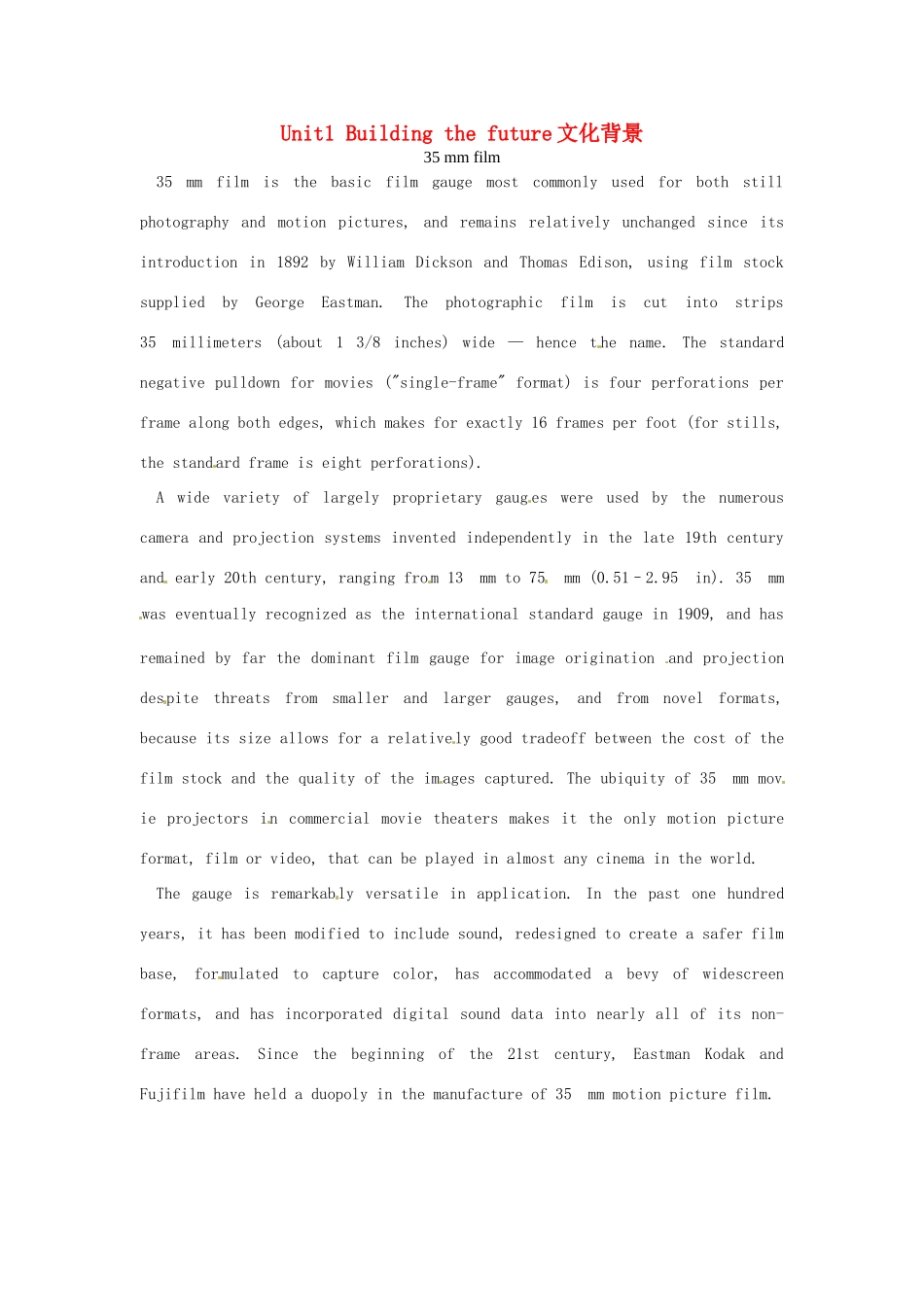Unit1 Building the future 文化背景 35 mm film35 mm film is the basic film gauge most commonly used for both still photography and motion pictures, and remains relatively unchanged since its introduction in 1892 by William Dickson and Thomas Edison, using film stock supplied by George Eastman. The photographic film is cut into strips 35 millimeters (about 1 3/8 inches) wide — hence t he name. The standard negative pulldown for movies ("single-frame" format) is four perforations per frame along both edges, which makes for exactly 16 frames per foot (for stills, the stand ard frame is eight perforations).A wide variety of largely proprietary gaug es were used by the numerous camera and projection systems invented independently in the late 19th century and early 20th century, ranging fro m 13 mm to 75 mm (0.51–2.95 in). 35 mm was eventually recognized as the international standard gauge in 1909, and has remained by far the dominant film gauge for image origination and projection despite threats from smaller and larger gauges, and from novel formats, because its size allows for a relatively good tradeoff between the cost of the film stock and the quality of the im ages captured. The ubiquity of 35 mm movie projectors in commercial movie theaters makes it the only motion picture format, film or video, that can be played in almost any cinema in the world.The gauge is remarkably versatile in application. In the past one hundred years, it has been modified to include sound, redesigned to create a safer film base, for mulated to capture color, has accommodated a bevy of widescreen formats, and has incorporated digital sound data into nearly all of its non-frame areas. Since the beginning of the 21st century, Eastman Kodak and Fujifilm have held a duopoly in the manufacture of 35 mm motion picture film.
